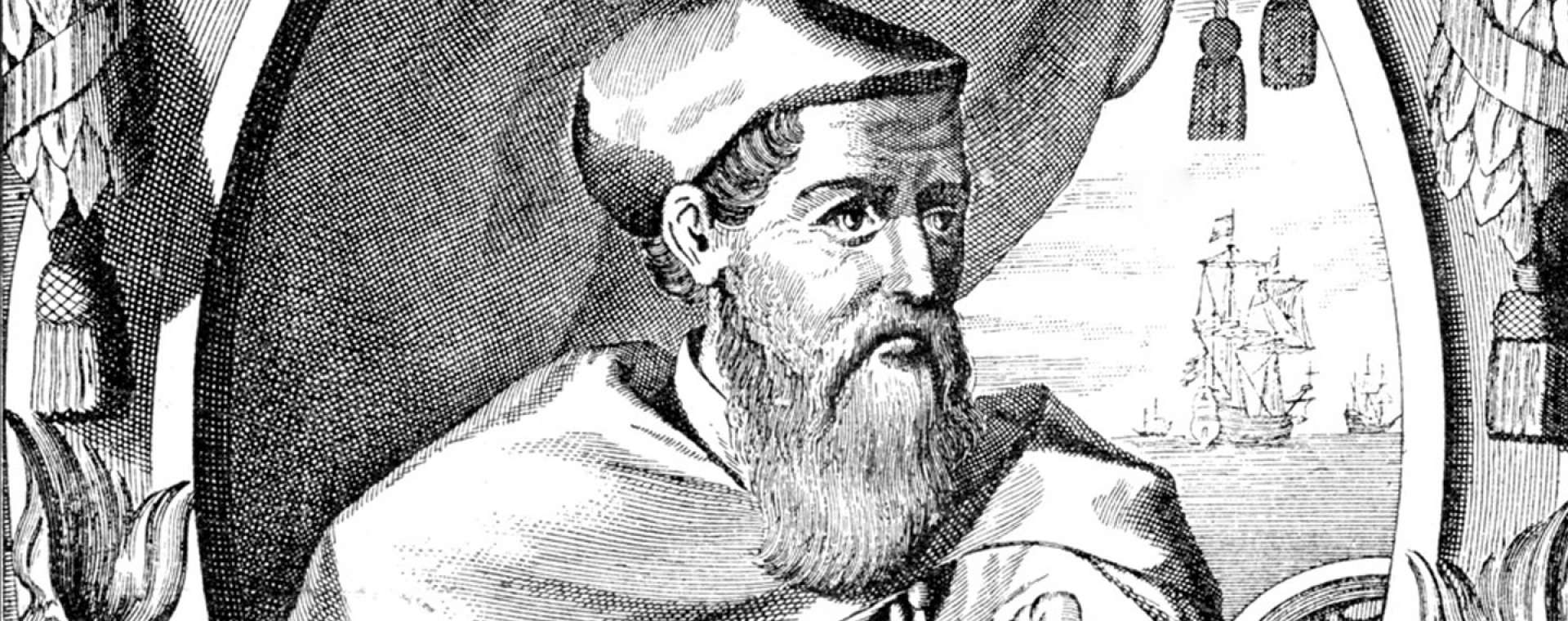The central Italian region of Tuscany has given a lot to the Western world. This was the first home of the Renaissance and the cradle of the modern Italian language. Famously industrious Florentines invented banking and issued the first pan-European currency. The laws of pendulum motion were discovered in Tuscany, as was the technique to paint in accurate perspective.
We could fill an entire A to Z just with painters, architects and sculptors, of course. Below are a few of our historical favourites; some you’ll know, but perhaps a few you won’t.
Amerigo Vespucci (b. Florence, 1454)
Navigator, cartographer and transatlantic explorer who gave his name to the continent of America.
Artemisia Gentileschi (b. Rome, 1593)
Born in Rome to a Tuscan dad, Gentileschi made her name as a baroque painter in Florence, becoming the first female member of the city’s Accademia di Belle Arti. Appropriately for a woman thriving in a man’s world, she favoured strong Biblical women as subjects — including a brutal “Judith Beheading Holofernes” in the Uffizi.
Catherine de’ Medici (b. Florence, 1519)
Orphaned by the time she was a month old, Catherine went on to become one of Florence’s most successful 16th-century exports. She married at 14 and became Queen of France. Three of her sons became kings of France, and she herself had sweeping powers for a time as Regent. Daughters also became queens of both France and Spain, and Catherine was the mother-in-law of Mary, Queen of Scots.
St. Catherine of Siena (b. Siena, 1347)
Italy’s co-patron saint (Francis is the other) was a key player in negotiations to repair the Western Schism that split the papacy between Avignon and Rome. Catherine was also a prolific letter writer, to statesmen, mercenaries and various religious figures, and active politically on behalf of Pope Gregory XI.
Dante Alighieri (b. Florence, 1265)
His 3-part “Commedia” (most famously, “Inferno”) is Italy’s greatest work of epic poetry. It also essentially codified modern Italian. At the time, most writers still published in Latin. Dante preferred the vernacular. He died in Ravenna after banishment from Florence. Florentines have been trying to get his body back pretty much ever since.
Galileo Galilei (b. Pisa, 1564)
The controversial astronomer and physicist discovered the Earth travelled around the sun (“heliocentrism”), fell out with 2 popes and was protected by science-mad Medici princes in Florence.
Giacomo Puccini (b. Lucca, 1858)
The composer of “La Bohème”, “Tosca”, “Madama Butterfly” and “Turandot” is the giant of early 20th-century opera. It’s a short hop from several villas near Lucca to his beloved lakeside home at Torre del Lago, where he wrote most of his operas. Torre del Lago also hosts the annual summer Festival Puccini.
Giovanni Boccaccio (b. Certaldo, 1313)
The author of the Decameron — basically an Italian “Canterbury Tales” — was a noted humanist and survivor of the Black Death epidemic that killed about half the population of Tuscany. Boccaccio also wrote the first known collection of biographies exclusively of women.
Guccio Gucci (b. Florence, 1881)
The founder of the fashion empire (still based in Florence) was first inspired by his time working at London’s Savoy Hotel.
Leonardo Da Vinci (b. Vinci, 1452)
Polymath and the ultimate Renaissance man, Leonardo was a painter (“Mona Lisa”, “Last Supper”), scientist, anatomist, mystic, architect and inventor. If you stay in one of our villas near Florence, you can easily visit his Vinci birthplace and its science-oriented Museo Leonardiano.
Matilda of Tuscany (b. 1046)
For a few decades around 1100, Margravine Matilda of Tuscany commanded central Italy’s most powerful force. She was a strong ally of the pope in a long-running war with Holy Roman Emperor Henry IV, which ended in the latter’s excommunication and ultimate humiliation of the Walk to Canossa. She died of gout in 1115.
Matteo Renzi (b. Rignano sull’Arno, 1975)
The former Mayor of Florence became Italy’s youngest prime minister in 2014, aged 39. He was the first Italian PM to name a 50% female cabinet, and oversaw the legalisation of same-sex civil unions.
Michelangelo Buonarroti (b. Caprese, 1475)
The man who decorated the Sistine Chapel didn’t actually like painting; he considered himself a sculptor, most famously of “David” in Florence’s Accademia. He was even put in charge of Florence’s fortifications during the siege of 1529–30.
Niccolò Machiavelli (b. Florence, 1469)
This Renaissance man of letters is best known for his study of the brutal Realpolitik of Cesare Borgia, published posthumously as “The Prince”. It’s been convincingly argued, however, that he was actually a republican.
Roberto Benigni (b. Castel Fiorentino, 1952)
The first person to win a Best Actor Oscar for a foreign-language film (“Life is Beautiful”) can also recite huge passages from Dante from memory.
Virginia Oldoini (b. Florence, 1837)
A Risorgimento politician when convention dictated women should only be seen as wives, mistresses or mothers, Oldoini was also a pioneer of portrait photography. Through the second half of the 19th century, she directed a long-running portrait project also starring herself. Many of these images are now in New York’s Met Museum.
